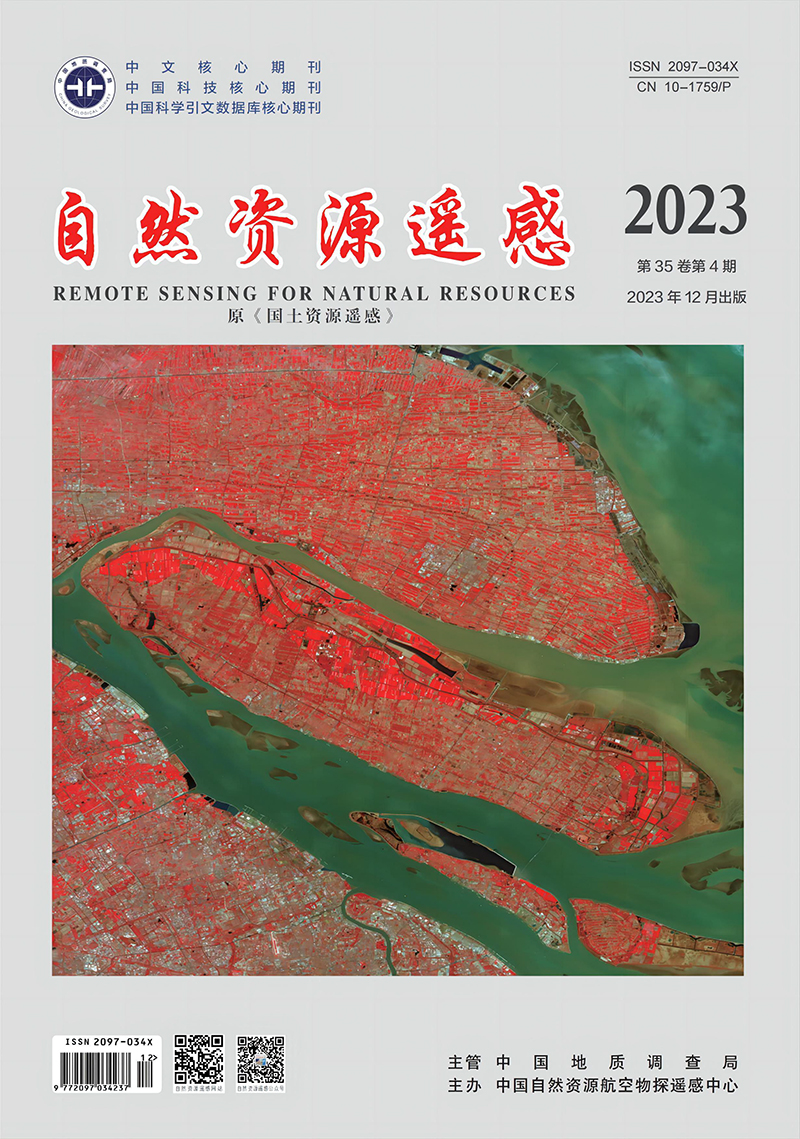HUANG Zhuo, SUN Jianguo, FENG Chunyue, XU Peng, YANG Hao, HOU Wenbing. 2023. ES change-based ecological restoration zoning for the Hexi region. Remote Sensing for Natural Resources, 35(4): 236-243. doi: 10.6046/zrzyyg.2022279
| Citation: |
HUANG Zhuo, SUN Jianguo, FENG Chunyue, XU Peng, YANG Hao, HOU Wenbing. 2023. ES change-based ecological restoration zoning for the Hexi region. Remote Sensing for Natural Resources, 35(4): 236-243. doi: 10.6046/zrzyyg.2022279
|
ES change-based ecological restoration zoning for the Hexi region
-
HUANG Zhuo1,2,3,
-
SUN Jianguo 1,2,3, ,
-
FENG Chunyue 1,2,3,
-
XU Peng4,
-
YANG Hao1,2,3,
-
HOU Wenbing1,2,3
-
1. Faculty of Geomatics, Lanzhou Jiaotong University, Lanzhou 730070, China
-
;2. National-Local Joint Engineering Research Center of Technologies and Applications for National Geographic State Monitoring, Lanzhou 730070, China
-
;3. Gansu Provincial Engineering Laboratory for National Geographic State Monitoring, Lanzhou 730070, China
-
;4. School of Geoscience and Technology, Southwest Petroleum University, Chengdu 610500, China
More Information
-
Corresponding author:
SUN Jianguo
-
Abstract
Ecological restoration zoning is a prerequisite for effective ecological restoration, and currently, the most commonly used zoning method is based on ecosystem services (ES). Most of the previous studies merely focus on the current ES status but ignore its changes, thus failing to reflect the potential and direction of ecological restoration. This study proposed a two-level zoning method for ecological restoration based on ES changes and applied this method to the Hexi region, Gansu Province. First, through Landsat image classification based on the Google Earth Engine (GEE) platform, this study obtained two periods (2005 and 2020) of land use data and calculated the ES sub-value and total value of the two periods of data using the equivalent factor method. Then, this study constructed the level-1 ecological restoration areas (priority restoration area PrR, important restoration area ImR, potential restoration area PoR, important protection area ImP, and priority protection area PrP) through the clustering and outlier analyses of the total ES value changes. Finally, the level-2 ecological restoration zones were determined based on the combined characteristics of changes in the values ES subitems. The results show that: ① Various level-1 areas, i.e., the PrR, ImR, PoR, ImP, and PrP areas account for 0.9%, 7.2%, 78.0%, 13.0%, and 0.9%, respectively. Most of the PoR areas are distributed in the Gobi desert of Hexi region, the PrR and PrP areas are sporadically distributed in the transition zone from the Qilian Mountains to the piedmont grassland, the ImR and ImP zones are mostly distributed in the Qilian Mountains, corridor plains, and mountains in the north. There exit greater potential for the restoration of the ImR areas and the protection of the ImP areas but limited potential for ecological restoration. Furthermore, there is a more urgent need for protection than for restoration; ② The level-2 areas can be classified into 10 categories of restoration areas and six categories of protection areas. The level-2 areas of the ImR and ImP areas are primarily determined based on the synergistic changes in sub-services. Both ecological restoration and protection measures for the Hexi region should focus on the comprehensive enhancement of ES.
-

-
-
Access History







 DownLoad:
DownLoad: